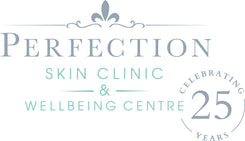Microneedling - NEW INFORMATION
Whilst self isolating I am enjoying the opportunity to attend virtual beauty week put on by Professional Beauty, which if this awful Virus hadn’t ruined things I would have been going to in London. However, it has meant I can sit and listen and watch all the seminars which I probably wouldn’t have got time to do otherwise.
One of the seminars I have watched was on Microneedling, it was very fascinating and informed me that there has been quite a few changes to how treatment should be approached and carried out.
Main changes being;
- Smaller needle size - better & quicker results
- No need for anaesthetic cream as needle size smaller - also anaesthetic cream does affect the treatment results
- Home use rollers - should we or not?
- Inflammatory response - good or bad?
A bit about Microneedling -
We think Microneedling was first used in 1995 by Dr Desmond Fernandes in Philadelphia to treat wrinkles and scars with hypodermic needles. Around the same time Dr Fernades developed a small needle stamp to induce collagen production.
With more research, microneedling was discovered to be successful in treating other skin conditions besides scars, capitalising on the body’s natural healing process.
Skin conditions to be treated, but not limited to;
- Lines & Wrinkles
- Smooth the skin
- Treat pigment issues
- Treat brown spots
- Brighten dull skin
- Enhance delivery system for topical preparations
Microneedling stimulates the body’s wound healing response in the following ways;
- Coagulation and clot formation - first few minutes after treatment (injury)
- Inflammation (reactive) - Within minutes to hours of injury - Increased capillary permeability (increased blood flow) and chemotaxis (movement of a cell in response to stimulus) result in the presence of leukocytes and macrophages which rid the wind of bacteria and debris.
- Proliferation (regenerative) - 2-3 days and lasts 2-4 weeks - Fibroblasts migrate inwards following chemoattractant signals from macrophages. They secrete collagen, elastin, and proteoglycans.
- Epithelialization - 2-21 days - Epithelial cells at the wound site flatten, detach, and migrate across the open wound. Proliferation begins again once the wound surface is covered.
- Maturation (remodelling) 3 weeks - 24 months - Type III collagen is replaced by Type I collagen. Collagenase regulates and balances collagen production.
Collagenase is the enzyme that peaks at around day 14 in the wound healing process to help with the remodelling excess collagen.

So there is no need to needle more than once every 2 weeks (at 0.5mm)
Inflammatory Response
For a long time we have considered that an inflammatory response is the major activation to collagen production. However inflammation is linked to various medical conditions and form the basis of ageing. Basically if this is correct why don’t clients with chronic skin conditions such as atopic dermatitis appear youthful forever? Aggressive inflammation can also lead to fibrosis as well as increased downtime and clients ability to endure the treatment.
It has become much more obvious that lots of skin conditions can be treated more superficially with a 0.5mm microneedling device more often than using a 1.0mm or 1.5mm at a deeper level. This does depend on what we are treating, scars and stretch marks will still need the deeper treatment.
Home use has also come under scrutiny. Can we trust our clients not to push too hard? Not use the device too often? Answer for me is yes mostly but no to some!
So for me it comes to this, if you have a roller at home please don’t use it more than once every 2 weeks. If you are using your roller for scarring then once a week only on the scarred area is ok.
